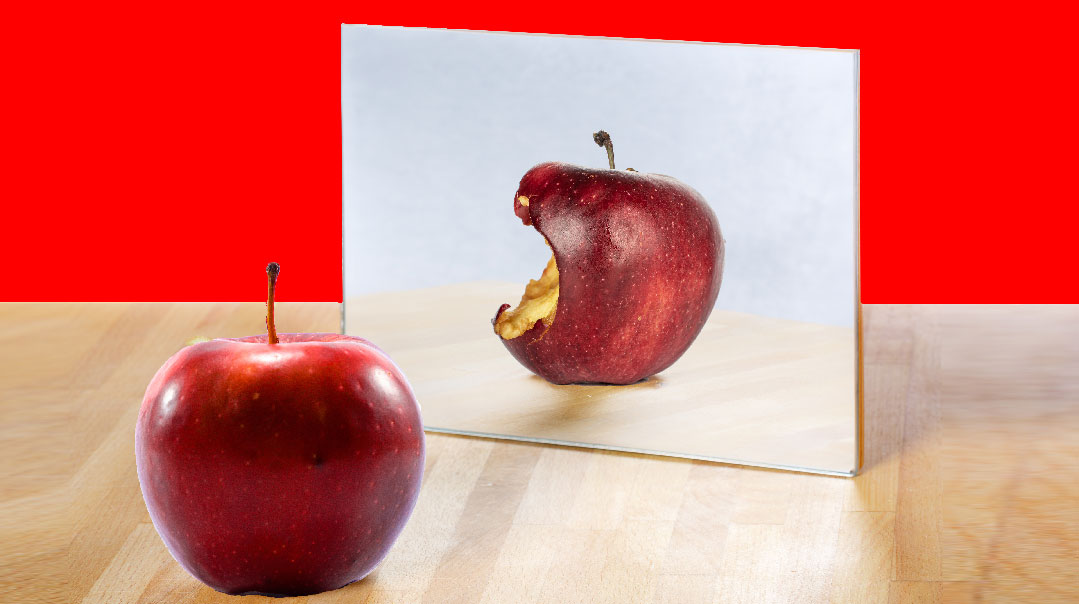Live and Learn


Photos: Shulim Goldring

“Workers of the world, unite!” was Karl Marx’s call. Alas, we beat him to it by about 3,000 years. Programs aimed at uniting the Jewish workmen around Torah have been around at least since the days of the geonim. In recent years, however, they have gone mainstream by harnessing modern technology. Today’s balabos needs a program that delivers strong returns for limited time — and the staying power to make it a permanent part of the juggling act.
These five programs are meant to do just that.
Owning It
Kinyan Hamasechta
If organizations are built around individuals, then a program crafted to make it exciting to review Gemara dozens of times is built around Rabbi Dovid Newman.
To Rabbi Newman, a mesivta rebbi in Monsey, talmidim don’t study Gemara, they “pound” it. They get “shikkur from simchah” while learning.
The program he began four years ago, Rabbi Newman says, “makes the Gemara your best friend.” That phrase was actually coined for V’haarev Na, a program he began in 2008 for bochurim. The inspirational V’haarev Na music videos alone can make learning contagious.
“A donor saw the video for V’haarev Na,” Rabbi Newman says, “and he said, ‘Hello, this is for bochurim, but what’s for balabatim?’ This was four years ago. Since then we have 40 chaburahs around the world for balabatim.”
Chaburahs are typically delivered five days a week and are about 45 minutes each, divided into two-thirds for learning fresh material and the remaining time dedicated to what the program is famous for — review.
“Don’t just go through the masechta, let the masechta go through you!” is their motto.
The program is meant to be deliberative, with clarity in the Gemara being the sole criterion for knowing when to move on. So, one chaburah will cover an amud a day, while a different group will take two or three days to reach the same target.
“There’s no fixed pace. The pace is determined by clarity. That’s number one,” Rabbi Newman says. “And number two, there’s tremendous chazarah built into the system. Each member gets two Gemaras, a bigger one and a smaller one. Where do they keep the smaller one? In the car or the office. Because they spend at least 15 minutes a day just chazering the piece they did that day.”
How does Kinyan Hamasechta get hundreds of working men to ignore the burdens of their day and throw themselves into the queries and parries of ancient Pumbedisa and Masa Mechasia?
The most important element, Rabbi Newman confides, is that the program goes to all lengths to drape a sentiment of camaraderie among Kinyan Hamasechta participants. When Yossi knows he has Yanky, Duvy, Lipa, and Fishel waiting and counting on him, it adds to the responsibility — and increases his subsequent sense of accomplishment.
It’s hard to argue with success. Rabbi Newman says that there are currently more than 400 “committed” members who have “owned” over 10,000 dapim.
At an event for all Kinyan Hamasechta members several weeks ago in Passaic, New Jersey, Rabbi Newman was handed a book full of letters by grateful studiers who wrote to express their appreciation. He says he was struck by how many of them mentioned the term “life-changing.”
“This is not a session where you go to the shiur and then, boom, you go home,” he says. “This is a change. It changes their life, it changes their marriage, it changes the chinuch of their house, it changes their simchah. It’s a whole different world.”
He gets constant messages from wives — how their husbands have an extra spring in their step; and from children — how their fathers are so much happier.
“Balabatim are literally walking in the street, driving in their cars, jogging on the jogging trails, flying on airplanes, and chazering Gemara,” he says.
Many Ways to Join
The excitement around the Siyum HaShas, the greatest modern-day celebration of simchas haTorah, is itself a magnet, drawing people close to learning Torah.
But what about those who wish to join in the simchah, feel it and use it as a building block, but find the daf yomi program isn’t tailored to their needs?
To accommodate that group, Agudath Israel of America has created Chavrei HaSiyum, allowing non–daf yomi learners to be equal celebrants at the great event.
The program works through shul rabbanim, explains Rabbi Shai Markowitz, director of the Lefkowitz Leadership Initiative of Agudath Israel. “It’s a win-win situation, because the rabbanim are eager to bring the inspiration and collective siyata d’Shmaya into their shuls, and we are excited to share it.”
In many cases, the shul takes on a joint Siyum HaShas, to be completed at the time of the grand siyum. “The shul divides Shas among the members: Sometimes it’s a masechta per person, other times it’s a perek or a certain number of blatt. There are shiurim, chavrusas, and individual learners, situations to suit each person’s need. They embrace it, because it gives them the sense of purpose and schedule that makes daf yomi so successful. Most serious bnei Torah want the pressure, they want to know they can’t miss a day if they’re tired or not in the mood — and this gives them that framework.”
Along with that, Agudah is developing an app that will allow the Chavrei HaSiyum to maintain their pace and meet their commitments through showing a clear picture of the progress made by the group, along with schedules, shiurim, and other relevant information.
“Whether someone chooses to learn according to Amud Yomi, Daf Hashavua, Dirshu, or one of the other great programs available, they will appreciate being part of a framework that promotes commitment and pace,” says Rabbi Markowitz. “Some might want to make their way through Shulchan Aruch or Tanach — they are all Chavrei HaSiyum, part of what we’re planning. Past siyumim have generated tens of thousands of new lomdim, and this program will be there, ready to greet them, to welcome their families — whatever the path to their siyum might be.”
Let Me Learn: Shivti
First comes elementary, followed by mesivta, and beis medrash. For many, kollel comes next. But what’s after that? Is there a 13th grade?
For the man who wants to recreate the yeshivah days of old — swallowing sugyas and delving into the “reid” — there’s Shivti.
Shivti — literally meaning “would that I dwell” in the House of Hashem — came together five years ago to patch up a gaping hole in Beis Medrash Govoha’s cradle-to-career system that appeared to yawn wider each year. Surprisingly, the township that is home to one of the two largest yeshivos in the world had no organized program catering to those who've moved on from organized study.
A group of balabatim approached Rabbi Aaron Kotler, the chief executive officer of BMG, with the request that he form a program for the working alumni.
Shivti’s genesis came shortly afterward, when Rabbi Kotler arranged for a holiday weekend yarchei kallah in nearby Eatontown. A hundred balabatim were feted at a hotel from Motzaei Shabbos until Monday night. There were three sedarim a day, with shiurim on a single topic that left participants feeling that they tackled a sugya.
They left heady, says Rabbi Avi Colman, who coordinates the program.
Then, Avi Feigenbaum, a nursing home executive who had dozens of employees attend the Eatontown program, began questioning — why settle for a once-a-year yarchei kallah? Rabbi Kotler offered his best answer — establishing Shivti as a separate unit in the BMG umbrella and remaking it into a weekly program.
Shivti’s modus operandi is simple. A kuntrus is prepared ahead of time — two weeks in advance is optimal, Rabbi Colman suggests — by staff members such as Rabbi Yossel Hoizman, Rabbi Avrohom Yeshaya Frand, Rabbi Zev Schonbrun, and himself. The pamphlet has a theme and contains just about everything there is to know about it.
For example, a recent sugya centered around the mitzvah of Kiddush. One week dealt with the prohibition of eating before Kiddush, another explored the philosophical question of whether it is d’Oraisa or d’Rabbanan, a third pursued a thread of which wine is preferable.
The chaburah starts off with in-depth study of relevant Gemaras and goes on through the generations, making stops at the eras of the Rishonim and Acharonim. The final destination is invariably halachah l’maasah.
“We started off at the Nachalas Yaakov shul in Lakewood,” Rabbi Colman says, “and within a few months we were up to about 15 locations. From there we moved on to Detroit and then to Houston. It was just word-of-mouth advertising.”
Shivti has gradually evolved into a daily program. Maarei mekomos are uploaded onto their website where thousands of people take it from. There are now about 200 programs on the year-old site, Rabbi Colman said, with it almost passing the 10,000th download.
There are currently 70 locations in 36 cities around the world in the Shivti program. There are 1,300 direct participants.
“We’re able to keep track because we know how much we’re printing,” Rabbi Colman says. “And we charge a membership fee as well; that’s how we’re able to exist.”
Even as the program expands, it remains true to its original vision of catering to the non-full-time learning population. Those without a yeshivah background will either be paired up with someone who has, or the rosh chaburah will go through the maarei mekomos.
“Since the maarei mekomos are so structured,” Rabbi Colman says, “anyone with an ability to read lashon hakodesh, and an appreciation for learning b’iyun, is able to follow along.”
A Weeek in Time: Daf Hashavua
It’s as simple as its name sounds. Learning a daf a day may be easier for some. Others, however, prefer learning more in depth, or require more than the hour or so a day they have to even make their way through the single folio.
Fifteen years ago, Shlomo Abrahams, a working man with an incredible concept, came up with the idea of learning a daf a week.
“No one knows him and he prefers to remain that way,” says Shimi Globman, who runs the program. “In my opinion he’s a lamed vavnik.”
Mr. Abrahams wanted to seize the benefits of the daf yomi learners — the very real responsibility to complete a page a day, the ability to join a class wherever in the world one is, the steadiness and the many resources provided — and apply them to those who want chazarah, the linchpin of any Gemara retention arrangement.
After experimenting with various ideas, he hit upon the daf hashavuah, a daf a week. It would take a ploddingly-long 52 years to complete, but it would combine the best of the daf yomi with the need for chazarah.
“Learn it, Review it, Own it,” became his motto.
“He started on Berachos daf beis, together with the daf yomi when they started Berachos daf beis,” says Mr. Globman, who by day is a vice president of a Teaneck mortgage bank. “There were many naysayers and many people laughed at him.”
But he persevered. He enlisted Mr. Globman, then fresh out of kollel, to the program when they started maseches Shabbos.
“I started learning with him and right away saw a tremendous aliyah in my learning,” he says. “Right away.”
Each time the group began a new masechta, it saw hundreds of new people join. Programs popped up in other cities. Rav Zev Cohen began the first shiur dedicated to its study at his shul in Chicago, Congregation Adas Yeshurun.
“I walk into a shul,” Mr. Globman says, “people start shmoozing with me in learning. I go to a kiddush on Shabbos and people start telling me insights. The pilpul chaveirim that came out of this is wondrous. This is exactly what daf yomi founder Rav Meir Shapiro envisioned — it’s just at a slower pace.”
With the advent of Pesachim came a new addition — self-accountability through testing. There are currently bechinos each week, as well every five weeks, in both Hebrew and English. There is also a weekly planner highlighting three different tracks — one that emphasizes the “reid,” or the must-learn meforshim, another that notes the halachah l’maasah that emerges from each daf, and the third is a primer for quick and constant review.
Currently, there are an at least 5,000 people at 110 locations registered in the program, either by attending a Daf Hashovua shiur or by regularly downloading the resources, according to Mr. Globman.
When the program first started taking off, Rabbi Zev Cohen went to Rav Chaim Kanievsky to tell him of the immense satisfaction he gets, even though it would take them over a half century to earn the coveted “Shas Yid” honorific.
The brachah bestowed by the aged sage was more than they requested.
“Zolen zei alle endigen — they should all complete it,” he said.
Shas Chaburah: A Shas Yid!
The term has always evoked a deep reverential awe among Torah Jews, with imagery of the few people in each generation who remain bent over a Gemara, grabbing their beards as they review the far-flung masechtos yet again.
The daf yomi program has extended the list of those who have learned the entire Shas to five-digit numbers of people. The Shas Chaburah program, as envisioned by Rabbi Sender Dolgin of Lakewood, aims to recreate the mastery of old in every area of the six sedarim.
“You give me two hours a day,” Rabbi Dolgin says, “and I will put you on a program to know the whole Shas. I started this program 21 years ago, in 1997, when I was not satisfied with the way I was remembering what I learned. Today people ask me questions on every part of Shas. You don’t need a superior head to do this.”
The Shas Chaburah program, for which Rabbi Dolgin cites both maamarei Chazal and scientific memory retrieval studies to back up, has participants learning new things while simultaneously reviewing what they learned already. Members review every day the material studied the previous day. It’s reviewed again a week later, a month later, three months later, and then a year later. And chazarah brings him back to the same daf each year.
The greatest accomplishment, Rabbi Dolgin says, is that it allows the learner to connect the same daf to an ever-increasing amount of Gemara. He compares it to a swimmer dipping his toes into the ocean.
“You don’t go the first day to the deepest part of the ocean,” he says. “You don’t try the first day to answer Rav Akiva Eiger’s questions. The first day you put your toes in the water, the next day you go up to your ankles. Every day you go further. You’re not going to get it the first time in Shas, or the third time, or even the tenth time. What I don’t get today, I’ll get tomorrow. What I don’t get tomorrow, I’ll get the next day or the next week or the next year.”
Another important suggestion of the Shas Chaburah for those having difficulty with complex sugyos is that it be based on using the many modern learning aids, such as ArtScroll, Mesivta, or recorded shiurim.
Rabbi Dolgin estimates that there are thousands of people doing the program across the world, including dozens who regularly complete Shas using it. There is an individualized Talmudo B’yado calendar which tells participants what they have to learn that day and which previously-learned Gemaras have to be reviewed.
The program has since been replicated by Rabbi Shmuel Abramowitz, who established a junior edition for children who learn and memorize Mishnayos. Called TBMC, which stands for Talmudo B’yado Mishnayos Clubs, it sets a schedule to learn and constantly review the Shishah Sidrei Mishnah.
Rabbi Dolgin refers to the TBLC as his stepchild and Rabbi Abramowitz as his “talmid muvhak.”
“You've got to get them when they’re young,” he says.
He will soon be making his 18th annual siyum haShas, “and every day I come into the beis medrash like a first grader on his first day of cheder,” Rabbi Dolgin says. The pleasure of knowing Shas “is a simchah that does not exist in This World.”
“Just to learn and nothing gets forgotten,” he adds. “The simchah just grows every day.”
The Halachic Factor: Dirshu
For the halachah-oriented working man, a familiar name beckons.
While Dirshu is better known for its daf yomi promotion and monthly testing on Gemara, its North American branch actually puts a great deal of effort into its Mishnah Berurah Yomi program, according to Rabbi Aaron Gobioff, Dirshu’s American director.
Dirshu itself had its origins in a Toronto beis medrash three daf yomi cycles (22 years) ago when Rabbi Dovid Hofstedter sought to increase both the quantity and quality of members of his amud yomi shiur. He started preparing tests, later expanding to establishing specialized kollelim for balabatim who learn his page-a-day program.
The Dirshu halachah program began about ten years ago, four years after its more famous tests for those learning daf yomi commenced.
Dirshu has many programs. But asked which one he would recommend for the balabos who asks, Rabbi Gobioff says he has no doubt.
“I would probably tell him that Mishnah Berurah is the way to go,” Rabbi Gobioff asserts. “Because, you have time to learn it, to chazer it — it takes about 40 minutes a day to learn, it gives you some extra time to chazer — it gives you elbow room because it’s only five days a week, plus two days chazarah, it’s only an amud a day.”
“You tell me you have three hours a day to learn,” he adds, “then we could start talking about what Dirshu can offer for daf yomi.”
Mishnah Berurah Yomi sends out a daily email with the basic halachos learned in the day’s limud. They have a calendar to make it easier to follow the program, which takes about seven years to complete. There are shiurim every day in most major cities in the United States and Canada, and they are broadcast on several programs, including Kol Halashon, Torah Anytime, and Shas Illuminated.
The ability Dirshu offers working men to know the gamut of halachah “changes people’s lives,” says Rabbi Gobioff.
“The stories I could tell you are mind-boggling,” he says. “These people become polished talmidei chachamim. They feel successful, their entire house is changed. I could write books about how people tell me how much it changed their lives — learning with an achrayos and a farher. That’s all the program runs around — learning, chazering, taking tests, and getting paid. It’s about learning with responsibility.”
Many working people also take the daf yomi tests, Rabbi Gobioff notes, including some who take what’s called the Kinyan Shas exam. This program tests periodically on material learned previously. This past testing cycle included tests on the approximately 2,200 dapim learned in daf yomi cycle so far.
“Who has the chutzpah to walk into such a bechinah?” Rabbi Gobioff says. “In America, dozens of people took it. And many of these people are people who work from nine to five. This is incredible.”
He recalls a businessman from Mount Kisco who wakes up at 3 a.m. to learn for two hours before davening and then puts in a full day of work. There is the business executive who didn't fail a daf yomi test in 12 years, and hangs up all his “hundreds” behind his desk.
We’re not called People of the Book for nothing.
(Originally featured in Mishpacha, Issue 750)
Oops! We could not locate your form.













